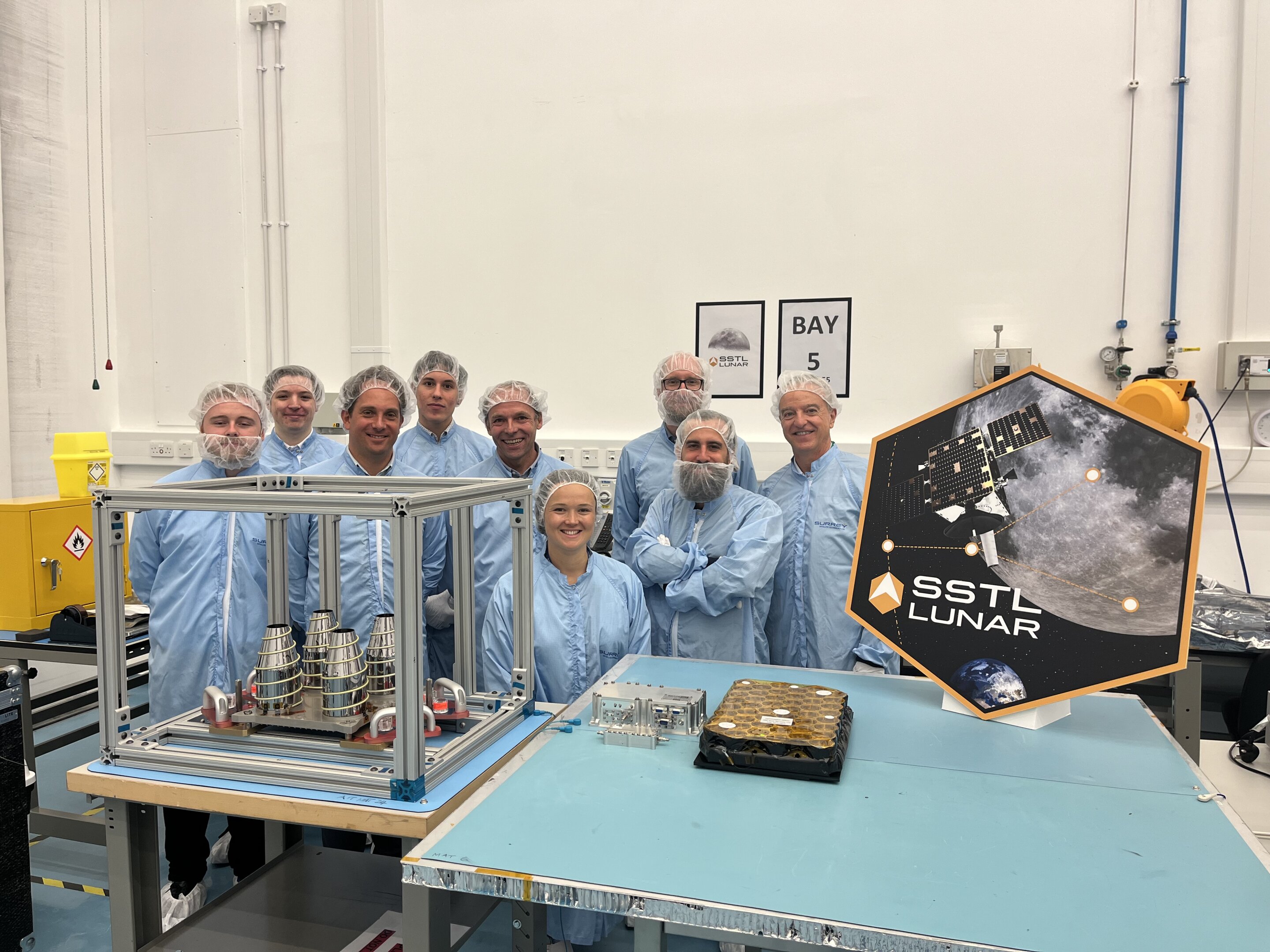Space exploration just keeps getting better and better. A cutting-edge Navigation payload, comprising a satnav receiver and a low noise amplifier, has been delivered to Surrey Satellite Technology Ltd in the UK for integration aboard the Lunar Pathfinder spacecraft. The Navigation payload is designed to enable the spacecraft to process faint terrestrial Global Navigation Satellite Signals from over 400,000 km away and fix its position, velocity, and timing in real-time. It will be a historic joint venture between the European Space Agency (ESA) and the National Aeronautics and Space Administration (NASA) when it launches on the Lunar Pathfinder mission in late 2025. The Lunar Pathfinder mission serves as a telecommunications relay satellite for future missions to the moon, providing service to nearside and farside assets.
The Navigation payload comprises a four-helix antenna, which has been developed by MDA in Canada, the NaviMoon satnav receiver from the Swiss company SpacePNT, and a low noise amplifier developed in the UK by EECL. The payload will complement a lunar Laser Retroreflector Array developed by NASA, composed of 48 mirrored retro-reflectors that will enable centimeter-scale laser ranging of the spacecraft as it orbits the moon, to authenticate the satnav receiver position fixes during the experiment.
According to Lily Forward, the Spacecraft Lead for Lunar Pathfinder at SSTL, the joint venture is a pioneering move towards autonomous lunar navigation, which could potentially revolutionize the way satellites are operated in cislunar space. The payload will have the capability to boost and process faint terrestrial Global Navigation Satellite Signal (GNSS) signals from more than 400 000 km away, harnessing advanced processing and navigation algorithms to fix the spacecraft’s position, velocity, and timing in lunar orbit in real-time. The results of the satnav experiment will be validated via concurrent X-band radio and laser ranging, allowing for the first-ever testing and combining of three ranging technologies at once—GNSS, radio, and laser ranging—which has never before been performed from lunar orbit.
The successful launch of the Lunar Pathfinder mission to the moon will be a launchpad for a new era of space exploration, enabling future moon missions to autonomously determine their own orbits, perform time reference transfers between Earth and the moon, and navigate in cislunar environments—fixing autonomously and in real-time their position, using GNSS, with an accuracy better than 100 m, without the need for costly ground infrastructure. As Cyril Botteron, CEO and Co-founder of SpacePNT, rightly points out: “This will be for the team the culmination of a long development that we started nearly 10 years ago at Ecole Polytechnique Fédérale de Lausanne (EPFL), with the development of a first proof of concept prototype of a super high sensitivity GNSS receiver suitable for moon missions.”
Citation:
First satnav receiver designed to operate in lunar orbit delivered to satellite maker (2023, June 9)
retrieved 9 June 2023
from https://phys.org/news/2023-06-satnav-lunar-orbit-satellite-maker.html
This document is subject to copyright. Apart from any fair dealing for the purpose of private study or research, no
part may be reproduced without the written permission. The content is provided for information purposes only.
Denial of responsibility! TechCodex is an automatic aggregator of the all world’s media. In each content, the hyperlink to the primary source is specified. All trademarks belong to their rightful owners, and all materials to their authors. For any complaint, please reach us at – [email protected]. We will take necessary action within 24 hours.

Jessica Irvine is a tech enthusiast specializing in gadgets. From smart home devices to cutting-edge electronics, Jessica explores the world of consumer tech, offering readers comprehensive reviews, hands-on experiences, and expert insights into the coolest and most innovative gadgets on the market.


